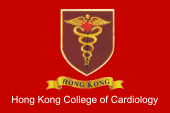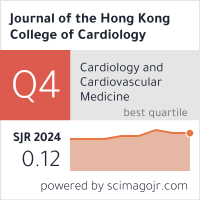Abstract
In 1998, 16.6 and 10.1% of patients died of heart and cerebrovascular diseases respectively. The main disease process is underlying atherosclerosis. In the coronary arteries, rupture or fissure of a vulnerable plaque is followed by thrombosis, with acute narrowing of the coronary artery that results in acute coronary syndrome (ACS).1 The key to thrombotic occlusion is the platelets, which can be activated by multiple mechanisms including thromboxane A2 , ADP, thrombin, collagen, and others. Once activated, platelet thrombus will be formed by fibrinogen binding to IIb/IIIa receptors.
Recommended Citation
Chu-Pak Lau, Wai-Hong Chen, Kam-Chuen Lai, Oral Anti-Platelet Therapy: The Good and the Bad Journal of the Hong Kong College of Cardiology 2002;10(2) https://doi.org/10.55503/2790-6744.1140
Creative Commons License

This work is licensed under a Creative Commons Attribution-Noncommercial-No Derivative Works 4.0 License.



